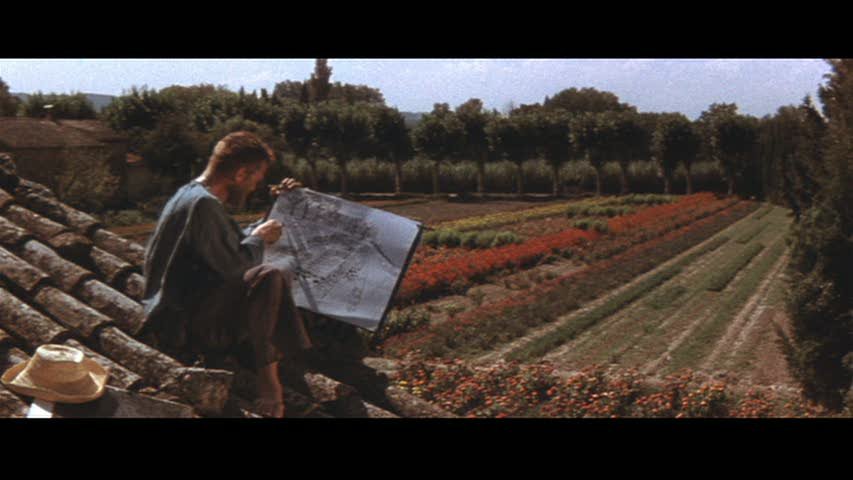Andrew Rostan was a film student before he realized that making comics was his horrible destiny, but he’s never shaken his love of cinema. Every two weeks, he’ll opine on current pictures or important movies from the past.
Two and a half months into the year, and some of us have a little pocket money from tax refunds or changes at the job. In what will be an ongoing feature of this column, I spotlight some brand-new DVD reissues from the past three months that you should seek out to buy or rent.
Tootsie (1982)
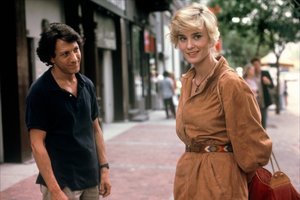 Birdman is out on DVD now, but we’ve written enough about it here, and some of you might want to see a truly flawless film about an ambitious actor. Sydney Pollack’s masterpiece, recently added to the Criterion Collection, is an absolute must. Tootsie is a perfect comedy, with every joke landing and the pacing ratcheting up without a drop until the climax.
Birdman is out on DVD now, but we’ve written enough about it here, and some of you might want to see a truly flawless film about an ambitious actor. Sydney Pollack’s masterpiece, recently added to the Criterion Collection, is an absolute must. Tootsie is a perfect comedy, with every joke landing and the pacing ratcheting up without a drop until the climax.
However, for a movie so hilarious, what one remembers most is its deep emotional well, especially with the three leads. The glorious Dustin Hoffman effortlessly switches between Michael Dorsey and Dorothy Michaels, but more importantly he learns a lesson that feels all the more urgent thirty years on, that one can’t become a full person until one really sees life from someone else’s point of view, while Teri Garr (a friend with benefits who aches to be more) and Jessica Lange (a single mother struggling to give her child a good life without losing her self-respect) are incredibly empathetic, as is Charles Durning as the sweet-natured widower who find new vigor when he falls for Hoffman’s female persona. The film is basically a lesson in how to write characters people care about. (Also, Bill Murray is so outstanding that an entire prequel about he and Hoffman’s friendship is deliriously imaginable.)
Fitzcarraldo (1982)
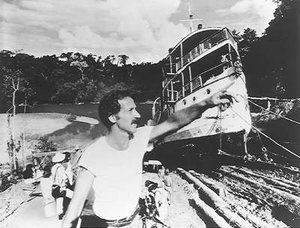 Back in 2007, I saw 300 in IMAX and my main reaction was headache-inducing disappointment over how fake and overreliant on CGI the entire film was. One week later, I had another cinema experience I’ve never forgotten because it washed away the bad taste of Zack Snyder’s film: watching Werner Herzog introduce Fitzcarraldo, a film where I knew that the 30-ton steamship being pulled over a mountain in the middle of a rainforest was a REAL 30-ton steamship being pulled over a REAL mountain in the heart of South America. Herzog’s cult icon status these days was won because of his artistry as a filmmaker, and this film, starring his alter ego Klaus Kinski in a surprisingly subdued performance as the opera-loving businessman trying to move that ship, is the grandest example of that art.
Back in 2007, I saw 300 in IMAX and my main reaction was headache-inducing disappointment over how fake and overreliant on CGI the entire film was. One week later, I had another cinema experience I’ve never forgotten because it washed away the bad taste of Zack Snyder’s film: watching Werner Herzog introduce Fitzcarraldo, a film where I knew that the 30-ton steamship being pulled over a mountain in the middle of a rainforest was a REAL 30-ton steamship being pulled over a REAL mountain in the heart of South America. Herzog’s cult icon status these days was won because of his artistry as a filmmaker, and this film, starring his alter ego Klaus Kinski in a surprisingly subdued performance as the opera-loving businessman trying to move that ship, is the grandest example of that art.
The Greatest Story Ever Told (1965)
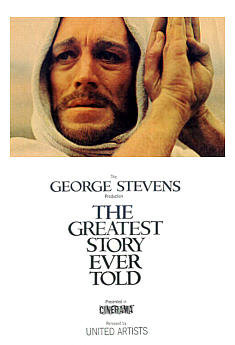 In trying to describe David Oyelowo’s singular turn as Martin Luther King, Jr. in Selma, my immediate comparison was one of the most underrated performances in Hollywood history (in my opinion at least): Max Von Sydow as Jesus Christ. Oyelowo and Von Sydow both share the ability of tricking me for a moment into thinking the original man had come back to life. This is much harder for Von Sydow, who is of course a very pale Swede bearing no resemblance to the true historical Jesus, but he conveys a spirit, gravity, and wonderfully touching sense of love which makes for moving drama: the raising of Lazarus remains one of the most mesmerizing scenes I’ve ever seen in film. The Greatest Story Ever Told on the whole, a true passion project from double Oscar-winner George Stevens, has some serious flaws. It’s four hours and change, Arizona isn’t the Holy Land, and the cast-every-role-with-a-major-star policy gets immensely silly by the end (Exhibit A: John Wayne. Exhibit B: Too Many to Count). But there are some beautiful moments to be found, especially when Von Sydow is joined by Charlton Heston (John the Baptist), David McCallum (Judas), Telly Savalas (Pontius Pilate), and a superb Donald Pleasance as a low-key, charming Satan.
In trying to describe David Oyelowo’s singular turn as Martin Luther King, Jr. in Selma, my immediate comparison was one of the most underrated performances in Hollywood history (in my opinion at least): Max Von Sydow as Jesus Christ. Oyelowo and Von Sydow both share the ability of tricking me for a moment into thinking the original man had come back to life. This is much harder for Von Sydow, who is of course a very pale Swede bearing no resemblance to the true historical Jesus, but he conveys a spirit, gravity, and wonderfully touching sense of love which makes for moving drama: the raising of Lazarus remains one of the most mesmerizing scenes I’ve ever seen in film. The Greatest Story Ever Told on the whole, a true passion project from double Oscar-winner George Stevens, has some serious flaws. It’s four hours and change, Arizona isn’t the Holy Land, and the cast-every-role-with-a-major-star policy gets immensely silly by the end (Exhibit A: John Wayne. Exhibit B: Too Many to Count). But there are some beautiful moments to be found, especially when Von Sydow is joined by Charlton Heston (John the Baptist), David McCallum (Judas), Telly Savalas (Pontius Pilate), and a superb Donald Pleasance as a low-key, charming Satan.
Lust For Life (1956)
One of the most beautiful movies of the 1950s takes full advantage of Cinemascope and Metrocolor to offer two hours of spellbinding imagery courtesy of director Vincente Minnelli and cinematographer Russell Harlan. The story of Vincent Van Gogh and his obsessive quest to capture the beauty of the world in his paintings is not action-packed but has a deep intensity all its own, especially with Kirk Douglas, in what may be his best performance, searing as Van Gogh and playing off two fine counterparts in James Donald as the quiet, gentle Theo Van Gogh and Anthony Quinn, who won an Oscar for spending just over 20 minutes on screen as the vibrant Paul Gaugin. The production code keeps some of the more hard-hitting details of Van Gogh’s life off-screen, but this is studio system filmmaking at its finest.
Watership Down (1979)
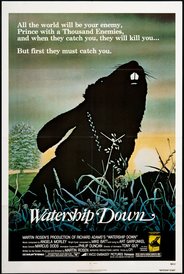 One more from Criterion, which has released a grand total of three animated films in their canon. The latest is a film that, for all its beauty, is one that makes you think twice about showing it your children. Martin Rosen, working with a team that included a dying John Hubley and a very young Brad Bird, turned Richard Adams’s fantasy classic into a lavish, sweeping film that represents the heights hand-drawn animation can reach. It also boasted the best voice cast of any animated film in the 70s, including Zero Mostel in his final movie, John Hurt, Ralph Richardson, and Michael Hordern narrating (as he did in Barry Lyndon and the Paddington cartoons) and playing the rabbit god Frith.
One more from Criterion, which has released a grand total of three animated films in their canon. The latest is a film that, for all its beauty, is one that makes you think twice about showing it your children. Martin Rosen, working with a team that included a dying John Hubley and a very young Brad Bird, turned Richard Adams’s fantasy classic into a lavish, sweeping film that represents the heights hand-drawn animation can reach. It also boasted the best voice cast of any animated film in the 70s, including Zero Mostel in his final movie, John Hurt, Ralph Richardson, and Michael Hordern narrating (as he did in Barry Lyndon and the Paddington cartoons) and playing the rabbit god Frith.
Midsomer Murders (1997-Current)
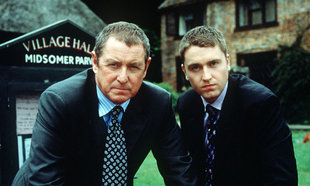 Finally, I want to single this out because the ITV Series, all of whose episodes are feature film-length, is about to release its TWENTY-SIXTH DVD set. Midsomer Murders is perfect comfort television, especially for those raised on Arthur Conan Doyle and Agatha Christie, as a bucolic English county full of charming villages plays host to far too many gruesome murders—estimated by experts to have 32 killings per million—which are always solved by Chief Inspector Tom Barnaby (the delightfully dry John Nettles). It’s not high art, but it’s a wonderful show to tune into on lazy weekends.
Finally, I want to single this out because the ITV Series, all of whose episodes are feature film-length, is about to release its TWENTY-SIXTH DVD set. Midsomer Murders is perfect comfort television, especially for those raised on Arthur Conan Doyle and Agatha Christie, as a bucolic English county full of charming villages plays host to far too many gruesome murders—estimated by experts to have 32 killings per million—which are always solved by Chief Inspector Tom Barnaby (the delightfully dry John Nettles). It’s not high art, but it’s a wonderful show to tune into on lazy weekends.
Pictures from moviecritic.com.au, The Guardian, Media Cache, What Did Nat Think of It?, Widescreen Museum, and Ways of Seeing.

